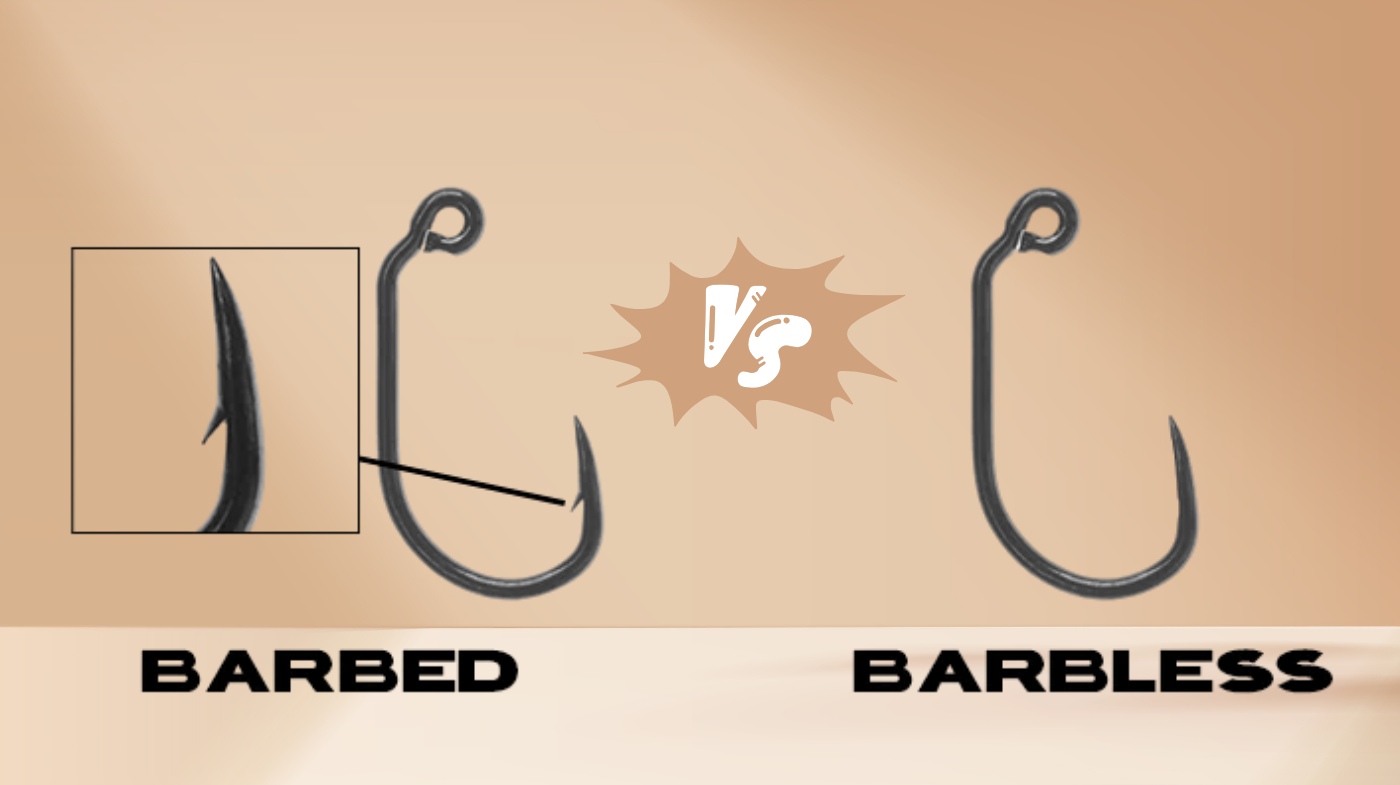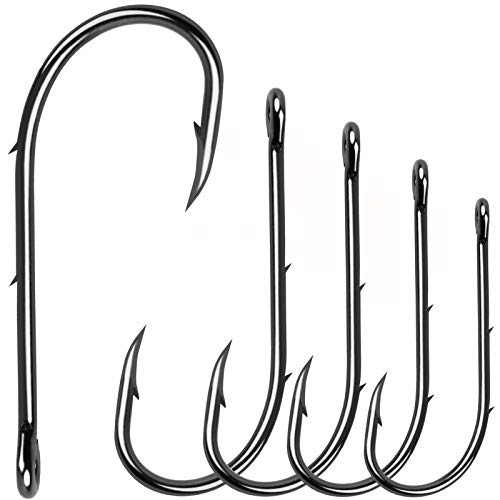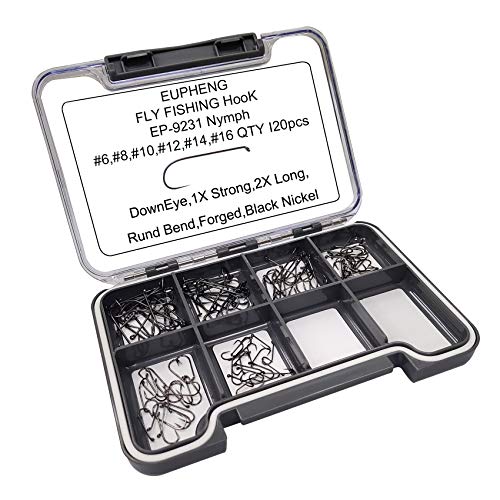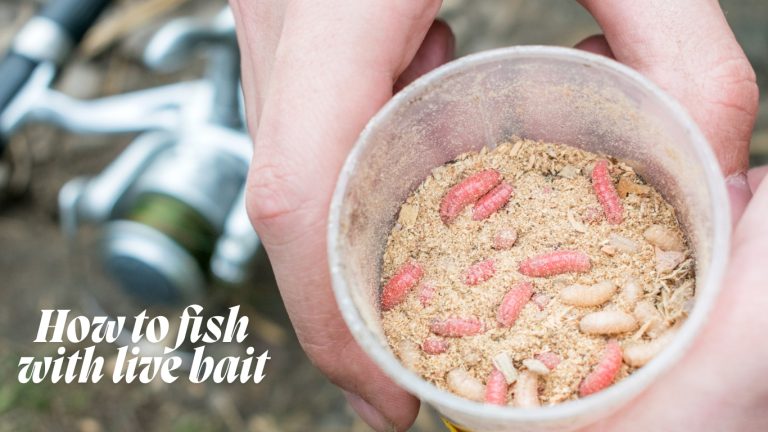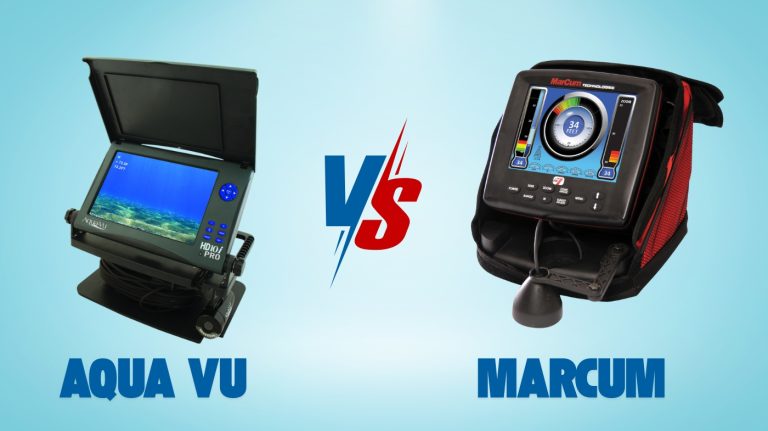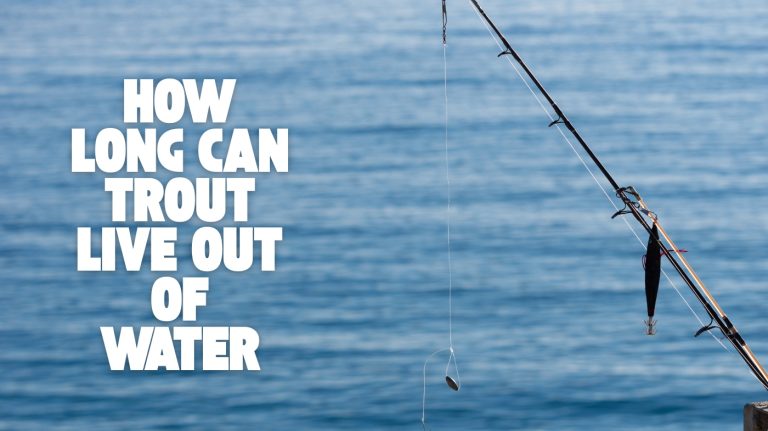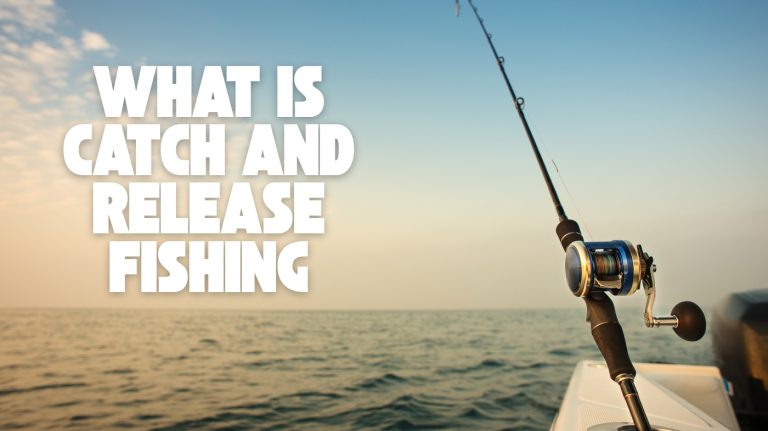Barbed Hooks vs Barbless: What Every Angler Should Know?
When choosing between barbed and barbless hooks, you’ll find barbed hooks offer better fish retention but cause more tissue damage and higher mortality rates.
Barbless hooks penetrate easily, reduce injuries, and enable quicker, safer removals, aiding catch-and-release survival.
They also lessen environmental impact by lowering lost gear and coral harm. While barbless hooks demand careful tension control to prevent escapes, they balance conservation with performance, especially for delicate species.
Understanding these differences helps you optimize fishing success and fish welfare.
- OUR PRODUCTS: A reasonable combination of fish hooks, 3#, 4#, 5#, 6#, 7#, 8#, 9#, 10#, 11#, 12#, a…
- SPECIAL DISIGN: Sharp tip with barbs, to ensure that the fish caught by the hook is not easy to…
- HIGH QUALITY MATERIAL: The fishhook is made of high carbon steel, excellent material, high strength,…
- Fishing hooks come with extra long reversed point for easy secure hooking, special shaped bend pulls…
- Barbless fishing hooks are made of super high carbon steel with black nickel for toughness &…
- Fly fishing hook with longer, sharper chemically etched straight point, make it easy to catch fish…
Key Takeaways
- Barbed hooks provide stronger fish retention but cause more tissue damage and higher mortality than barbless hooks.
- Barbless hooks enable quicker, easier removal, reducing fish stress and improving survival in catch-and-release fishing.
- Fish mortality depends more on hooking location and water temperature than hook type alone.
- Barbless hooks reduce environmental impact by lowering lost gear and coral damage compared to persistent barbed hooks.
- Angler skill and proper technique are crucial for effective use of both hook types, with barbless requiring steadier tension.
Quick Comparison of Hook Types for Anglers
| Aspect | Barbed Hooks | Barbless Hooks |
|---|---|---|
| Fish Retention | Stronger hold, reduces escapes | Requires steady tension, similar retention with skill |
| Fish Injury | Higher tissue damage, gill and mouth injuries | Minimal injury, supports catch-and-release survival |
| Hook Removal | Difficult, longer handling time | Smooth, fast removal |
| Angler Safety | Higher risk of injury when unhooking | Safer, less chance of accidents |
| Tension Management | Less constant pressure needed | Requires steady tension to prevent escapes |
| Environmental Impact | Lost hooks persist, can harm reefs and marine life | Lower lost gear risk, reduced ecological damage |
| Species Adaptation | Good for tough-mouthed or large fish | Ideal for delicate species and conservation-focused fishing |
Fish Welfare and Mortality Rates
Although barbed hooks tend to cause higher average mortality rates (~15.1%) compared to barbless hooks (~8.6%) in catch-and-release fishing, mortality is mainly driven by factors like deep hooking and elevated water temperatures rather than hook type alone. It is important to note that water temperature significantly influences fish mortality rates after hooking.
You should recognize that overall mortality after hooking often remains low, frequently under 10%. Meta-analyses combining various gear types reveal no significant mortality difference between barbed and barbless hooks.
Natural background mortality in wild trout populations (30-65% annually) far exceeds minor differences due to hook design. However, barbed hooks inflict more severe injuries, such as increased bleeding, gill damage, and esophagus tears, raising physiological stress and potentially compromising fish welfare.
Using barbless hooks reduces injury severity and handling time, which benefits post-release survival and fish health in catch-and-release scenarios.
Hooking Effectiveness and Fish Retention
Understanding how barbed and barbless hooks perform in aspects of hooking effectiveness and fish retention is key to evaluating their practical use in fishing.
You’ll find that initial hooking success doesn’t considerably differ between the two when you use proper hook-setting techniques, as fish often reject bait before the hook sets. Proper tension control during the fight is essential for maintaining hook hold regardless of hook type.
Barbless hooks penetrate more easily, possibly enhancing hooking efficiency with thin points.
During the fight, barbs may reduce escapes by catching tissue, but retention largely depends on your tension control skills, with data showing similar fish loss rates for both hook types. Fulling Mill’s design improvements, such as extending the hook point, have helped barbless hooks hold fish as effectively as barbed ones.
Post-catch retention slightly favors barbed hooks, though barbless hooks enable faster, less stressful hook removal.
Ultimately, hooking effectiveness and retention hinge more on your technique than on hook design alone.
Species-Specific Hook Preferences
When selecting hooks for specific species, you must consider factors like fish size, mouth anatomy, and typical bait used to optimize hooking efficiency and minimize harm. Additionally, the choice of protective gear such as sunglasses with specialized lenses can enhance visibility and safety during fishing, especially in varying light and water conditions, as seen with lens technology differences.
Freshwater species such as trout favor small, light wire hooks (sizes 8-14) for finesse, while bass require medium-sized wide-gap hooks for soft plastics.
Saltwater species like marlin demand large, heavy-duty hooks (4/0+), built to withstand powerful runs and corrosion.
Additionally, choosing between barbed and barbless hooks can influence fish retention and release success, depending on the fishing technique and conservation goals, as barbed vs barbless hooks offer different benefits.
| Species Group | Typical Hook Size | Preferred Hook Type |
|---|---|---|
| Small Freshwater | 8 to 14 | Circle, barbed bait hooks |
| Medium Freshwater | 1 to 4/0 | Worm, bait hooks |
| Large Saltwater | 4/0 and larger | Circle, heavy-duty hooks |
Matching hook size and type to species ensures effective hooking and reduces injury.
Angler Safety and Handling Considerations
When you take out barbless hooks, you’ll feel that there’s way less resistance. This makes it quicker and easier to get them out, which means you spend less time handling the fish. Barbless hooks often fall out easily, enabling catch-and-release with minimal handling fish handling. After fishing, cleaning your gear properly, including your shoes, is important for maintaining their condition and ensuring safety.
On the other hand, barbed hooks can be a bit tricky. They require more tension and careful maneuvering, which can increase the chances of hurting yourself or the fish. Proper cleaning methods, such as gentle hand washing, help preserve your equipment and reduce risks during handling.
Hook Removal Ease
Although barbed hooks hold fish more securely, you’ll find that barbless hooks considerably ease the removal process for both fish and anglers. Barbless hooks slide out smoothly, reducing tissue damage and extraction time, which is vital for minimizing fish stress and improving post-release survival. In addition, using barbless hooks supports sustainable outdoor gear use by encouraging practices that reduce harm to fish populations.
In contrast, barbs embed deeper, often requiring force or tools, increasing trauma and handling duration. For anglers, barbless hooks simplify accidental skin removal, lowering injury risk and the need for medical intervention. Removing barbed hooks from skin can be painful and complicated.
Additionally, barbless hooks enable quicker releases, especially for delicate species like trout, by minimizing mouth trauma. Employing barbless hooks promotes safer, more efficient unhooking practices, benefiting both angler safety and fish welfare during catch-and-release. This also helps reduce the higher fish mortality associated with barbed hooks.
Handling and Tension
Easing hook removal with barbless designs offers clear benefits, but effectively managing handling and tension during the fight presents a different set of challenges. Angling’s emphasis on skill and patience becomes particularly important when using barbless hooks.
Barbless hooks require you to maintain steady pressure to prevent escapes, demanding refined skill and attention. Both Kevin Nash and Chris Ellyatt agree that modern hook designs contribute to effective hooking regardless of barb presence. Barbed hooks hold securely under slack but risk greater fish and angler injury. Your handling technique directly influences fish welfare and safety.
| Aspect | Barbed Hook |
|---|---|
| Tension Management | Less constant pressure needed |
| Fish Injury | Higher risk of mouth damage |
| Angler Safety | Greater injury potential |
| Hook Removal | More difficult, time-consuming |
Mastering tension control with barbless hooks improves fish survival and reduces handling injuries, enhancing both angler safety and conservation outcomes.
Environmental and Regulatory Impacts
Because abandoned fishing gear substantially contributes to marine debris and habitat damage, choosing between barbed and barbless hooks directly influences environmental outcomes.
Barbed hooks, often made of non-biodegradable materials, persist underwater, damaging coral reefs and harming marine life through entanglement or embedded injuries that increase fish mortality. The persistence of these hooks in saltwater can last for years, greatly increasing environmental impact.
Barbless hooks reduce snag risks, lowering lost gear rates and associated environmental pollution. Their design also facilitates quick-release during catch-and-release fishing, minimizing harm to fish.
Additionally, barbless hooks cause less severe wounds, supporting fish survival post-release, which aligns with conservation goals.
Regulatory bodies increasingly mandate barbless hook use in catch-and-release zones to sustain fish populations and minimize cumulative mortality.
Compliance with these regulations promotes responsible angling and ecosystem health, especially in sensitive habitats where individual fish survival critically affects species viability.
Your hook choice therefore directly affects both ecological integrity and regulatory adherence.
Tactical Advantages in Different Fishing Scenarios
When choosing between barbed and barbless hooks, you must consider the species you’re targeting and their unique mouth anatomy, as this directly affects hook performance and fish handling. The choice similarly parallels how anglers select fishing lines based on factors like flexibility and knot strength, impacting overall fishing success.
For tough-mouthed species like tarpon, permit, and redfish, barbed hooks provide superior holding power during heavy thrashing, reducing hook loss.
Barbed hooks excel with tough-mouthed species, ensuring secure holds amid vigorous thrashing and minimizing hook loss.
Conversely, delicate species such as trout benefit from barbless hooks that penetrate cleanly and minimize tissue damage, facilitating quicker, less traumatic releases. Studies show that fish mortality is more influenced by handling than hook type, highlighting the importance of careful fish handling.
Bass anglers can opt for either, as their fish’s leathery mouths accommodate both types effectively.
In scenarios targeting pike or musky, barbless hooks ease safe unhooking despite less relevance of barbs to retention, especially when paired with wire leaders.
Differences Between True Barbless and Debarbed Hooks
Although both true barbless and debarbed hooks eliminate the traditional barb, they differ considerably in design and manufacturing processes. Selecting the right hook type can impact durability and performance, similar to how wader construction materials affect fishing gear longevity.
True barbless hooks are manufactured without a barb, featuring a longer, often tapered or upturned point engineered to maintain hooking efficiency and strength. Their design parallels purpose-built fishing gear that emphasizes strength and longevity.
Debarbed hooks start as barbed hooks with barbs filed off or crimped flat, retaining the original straight point and design. This modification can introduce weak spots or reduce penetration, especially on smaller hooks.
True barbless hooks typically offer stronger gauge integrity and improved penetration due to their purpose-built shape. In contrast, debarbed hooks may suffer from residual barb resistance if not precisely altered.
Both require proper angler technique for optimal hooking, but true barbless hooks generally provide marginally better penetration and retention performance. It is important to remember that hooking depends on the angler’s action, not just the hook design.
Impact on Fish Catch-and-Release Success
Understanding the structural differences between true barbless and debarbed hooks sets the stage for evaluating their effects on fish survival after catch-and-release.
Barbless hooks generally reduce mortality by minimizing injury and stress. You’ll notice benefits such as lower average mortality rates (around 6.5–8.2%) compared to barbed hooks (up to 19.5%).
Barbless hooks lower fish mortality by reducing injury and stress compared to barbed hooks.
They also cause reduced tissue damage and bleeding, which aids recovery and survival. Additionally, faster, easier hook removal cuts handling time by roughly 50%, decreasing fish stress.
There’s an increased fish escape risk, requiring more angler skill to maintain catch. Fish species, water conditions, and handling also influence survival outcomes, not hook type alone.
Considering the impact resistance of fishing gear can also affect overall fish handling safety and angler experience during catch-and-release.
Balancing Performance and Conservation Goals
Since anglers often prioritize both successful catch rates and fish welfare, balancing hook performance with conservation goals requires careful consideration of hook type impacts.
Barbed hooks yield approximately 22% higher landing rates, enhancing angler success, but cause markedly greater tissue damage, including esophagus tears (39.13% vs. 6.52%) and gill injuries (28.26% vs. 15.22%), increasing fish mortality risk. These injuries can be especially detrimental to species like brook trout that are known for their wariness and selective feeding.
Barbless hooks reduce bleeding incidence (8.70% vs. 30.43%) and facilitate faster, less stressful hook removal, promoting post-release survival. Proper fish handling techniques, such as keeping fish in water and minimizing handling time, can further improve survival regardless of hook type, emphasizing the importance of responsible angling practices.
While barbless hooks may increase fish loss during retrieval, they encourage skill development and support sustainable angling practices. Considering fish species’ different fighting styles and behavior, such as the agile, fast movements of brook trout versus the bottom-seeking dives of cutthroat trout, can help anglers optimize hook selection and retrieval techniques.
Emerging designs like micro-barbed hooks aim to optimize retention and minimize injury, offering a compromise.
Frequently Asked Questions
How Do Barbed and Barbless Hooks Differ in Manufacturing Cost?
You’ll find barbless hooks usually cost a bit more to make because they require extra precision in sharpening and stronger materials to compensate for the missing barb.
Barbed hooks benefit from a streamlined, mass-production process, lowering costs.
Though prices can vary by brand and quality, barbless hooks often demand specialized tooling or chemical sharpening, driving up expenses.
Still, their durability and performance might justify the higher price in certain fishing situations.
Can Barbless Hooks Be Used Effectively in Ice Fishing?
Yes, you can effectively use barbless hooks in ice fishing. They minimize tissue damage and enable faster, in-water hook removal, reducing fish stress and mortality.
Though you must maintain steady line tension to prevent fish escape, careful technique guarantees strong retention rates. Barbless hooks also enhance safety by reducing injury risks to you and simplify gear handling, making them well-suited for ice fishing’s cold, demanding conditions.
What Materials Are Commonly Used for Barbed Versus Barbless Hooks?
You’d think both hook types would use the same materials, but they don’t. Barbed hooks usually rely on high-carbon steel for strength and sharpness, sometimes coated for rust resistance or stainless steel in saltwater.
Barbless hooks favor stainless steel for corrosion resistance and smoothness, often made from thinner wire or modified barbed hooks.
The materials reflect their function: barbed hooks need toughness, while barbless hooks prioritize easy, gentle fish release.
Are There Specific Knot Types Better Suited for Barbless Hooks?
Yes, certain knots work better with barbless hooks. You should use knots like the Palomar or Snell because they offer strong locking mechanisms and minimal bulk near the hook eye, preventing slippage.
Always moisten the line before tightening to reduce friction and guarantee the knot seats properly.
Avoid bulky knots that rely on a barb for security.
Trimming tag ends after tying also helps maintain knot integrity and reduces snagging risks.
How Does Hook Size Selection Vary Between Barbed and Barbless Hooks?
You’ll often choose slightly smaller sizes with barbless hooks because their extended points penetrate better despite lacking barbs.
Barbed hooks require larger sizes to accommodate the barb and maintain holding strength, especially for tougher fish.
For soft-mouthed species, barbless hooks let you reduce hook size to minimize injury, while barbed hooks need sizing that balances penetration and mechanical hold.
Adjust size based on fish mouth toughness and hook design.
Conservation Meets Performance: Make Every Hook Count
When you choose between barbed and barbless hooks, think of it like choosing between a Velcro strap and a smooth clasp. Both hold, but one releases with less damage.
Studies show barbless hooks reduce fish injury by up to 50%, improving survival in catch-and-release. By balancing effective retention with fish welfare, you not only protect the species but also enhance your angling experience. Making every catch a win for both you and the environment.
- CORROSION RESISTANT – Baitholder Fishing Hooks are made of high carbon steel with high strength and…
- 2 BAITHOLDER BARBS – Baitholder hook with two bait holding slices along the back to help your bait…
- SHARP – The baitholder hook has a beaked hooked point for secure hook ups and an offset hook point…
- EUPHENG EP-9231 Barbless: This is an excellent choice for Nymph Fly. The hook with 2X Long Forged…
- GREAT VALUE PACK: #6, #8, #10, #12, #14, #16; total 120pcs, each size 20pcs.
- PREMIUM MATERIAL AND MAUNFACTURE TECH: Made of best quality high carbon steel wire specially…
Last update on 2025-11-25 / Affiliate links / Images from Amazon Product Advertising API

